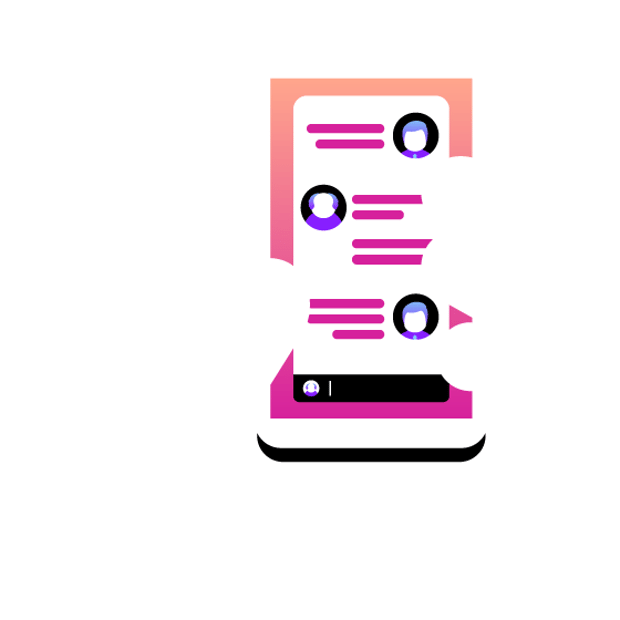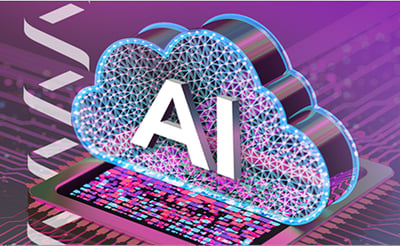What Is a Messaging API, and How Can It Benefit Your Customer Communications?
Folks use their mobile device all day, every day. They certainly use it to keep in touch with family and friends. But an amazing 87% of consumers use at least one messaging or texting platform to communicate with businesses and service providers (source: Vonage Global Customer Engagement Report 2024).
“At least one” is important to highlight. That’s because customers definitely have their favorites messaging/texting channels:
WhatsApp, 51%
SMS, 49%
Facebook/Messenger, 29%
Instagram, 24%
Telegram, 17%
Source: Vonage Global Customer Engagement Report 2024
Does this mean that you have to hire additional staff to build and manage these multiple channels? No. Say hello to messaging APIs that link SMS, MMS, and popular social chat apps within a single build. No matter what channels your customers use, you have the context to cultivate a top-notch customer experience. Let’s dive in to learn more.

How do messaging APIs work?
Imagine you're waiting on a ride-share at a busy airport. You receive a series of texts directly to your phone during the transaction:
One to confirm your pickup time and place.
Another to indicate the driver is close.
A third — this one from the driver — to clarify the car's location in the bustling pickup area.
It might be seamless on your end, but achieving that mix of automated and in-person communication requires a great deal of technical lift on the backend. Something as supposedly simple as automatically alerting you of the pickup time would necessitate access to multiple systems and layers of automation. This includes the driver being able to securely text you from within the ride-share app and receive your response via the same digital space. And all the while, the backend solutions must serve as the data bridge to ensure seamlessness.
By providing a standard framework across communications infrastructure, endpoint devices, communications channels, and carrier networks — a messaging API can make this level of interplay possible without the need to reinvent the wheel. Businesses can then easily integrate the API into a new or existing app, which offers nearly unlimited scalability. It can also mean building added layers of security and privacy into new or existing systems. For example, a bank can use SMS-based verification codes to ensure user security or send automatic overdraft text alerts.
 Get the data
Get the data
Business use cases for messaging APIs
Communications vendors like Vonage offer libraries of interconnected communications APIs. These tools make it possible to carry out numerous types of personalized communications via voice, video, and messaging channels, so your customers can reach you through their preferred channels.
In the specific case of messaging APIs, that could mean a number of business- and customer-facing benefits, including:
Shipping and delivery confirmation
Instead of having customers log into websites or apps to get order status updates, an automated text-based system can be configured to alert them via SMS at multiple stages of the purchase journey. This puts customers at ease as they receive a confirmation when the order's placed, another when the product ships, and a final one when it hits their doorstep.
Appointment confirmation and reminders
Healthcare providers, hotels, and educational facilities are just three examples of business models that thrive when people show up on time. With the right API, a company can send automated alerts at the time the appointment is made — along with reminders — to the customer’s favorite text channel.
Users can then reply to trigger an automated confirmation or even reschedule without the need to download a standalone app or call the provider. This enhances the customer experience and reduces late arrivals and no-shows.
You can even add automation and personalization to the shipping and appointment use cases by incorporating Vonage AI Studio. Now you can enjoy generative AI-driven bots to automatically respond to inquiries, route to the right agent, or escalate the message to a voice call.
Verification and two-factor authentication
Vonage Verify API enables companies to build stronger, omnichannel authentication measures into their current workflows. This offers the dual benefit of reduced fraud and making customers feel more secure … not to mention the time and resource savings of combating fraud after it happens.
Vonage enterprise-grade SMS tools also come with powerful built-in fraud detection and prevention capabilities — which allow you to simplify and fine-tune your account, country, and network-level security controls.
You can also leverage a solution like Vonage Fraud Defender, which brings proactive fraud alerting and blocking for Vonage SMS tools . If you’re looking to prevent smishing and artificially inflated traffic fraud attacks, Vonage SMS tools and Fraud Defender (available at no additional cost) are a powerful combination.
Global SMS compliance
Thanks to Vonage, there's no need to grapple with country-specific codes or immerse your business in the highly technical — and extremely detailed — complexities of individual global carriers. Instead of writing country-specific code, the API makes it possible to scale your workloads globally with far less work and specialized knowledge.
Pre-Approval via 10-Digit Long Codes (10DLC)
The 10DLC standard is sanctioned for application-to-person (A2P) messaging, and approved numbers have the advantage of being pre-approved by mobile network operators. That reduces the incidence of spam on the user's side while ensuring extremely high reliability and deliverability rates for the companies using the numbers.
And the ability to send messages with high throughput and global scale — with local numbers — brings an even greater level of scalability to your text messaging.
Note that this is just a small sample of the benefits Vonage makes available to businesses. 10DLC and traditional SMS-based communication via Vonage APIs can also be a powerhouse for marketing, customer engagement, and other legitimate business use cases.
Ready for your workflows
Development and integration are two important steps in any tech integration. But they don’t have to be daunting. Vonage provides access to a suite of communications APIs and technical support resources. And a dedicated team can help you scope and build throughout your project.
Time to add powerful communications capabilities into your current infrastructure with Vonage. Take a look at our Messages API and SMS API.
